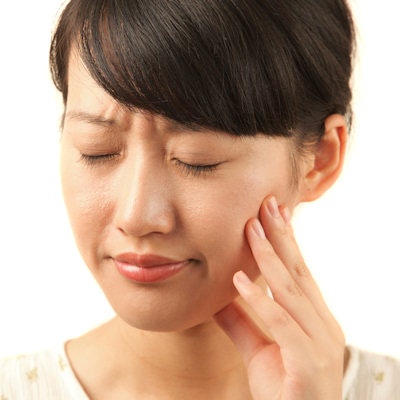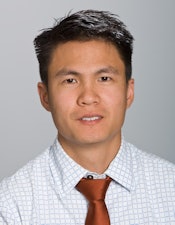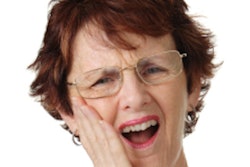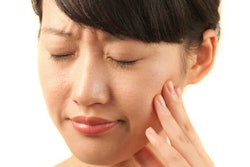
Many patients come to the dentist seeking relief from pain. While most problems might be readily identifiable in your office, some issues may not be so obvious.
 Andrew Young, DDS, director of the orofacial pain clinic at the University of the Pacific Dugoni School of Dentistry.
Andrew Young, DDS, director of the orofacial pain clinic at the University of the Pacific Dugoni School of Dentistry.Orofacial pain can be caused by dental, joint, or muscular issues, but this pain may also be caused by neurological or psychological issues, according to Andrew Young, DDS, director of the orofacial pain clinic at the University of the Pacific Arthur A. Dugoni School of Dentistry in San Francisco. Dr. Young explained how practitioners can recognize the different types of oral pain and the appropriate treatments in a session at the recent California Dental Association's CDA Presents 2016 conference.
"Pain is the body's alarm, and it's saying, 'If you don't pay attention to this pain, it's going to get worse,' " Dr. Young said.
Recognizing the source
Dr. Young discussed how to recognize and treat joint, muscle, neuropathic, and other conditions that cause pain in a patient's mouth and face and also when to refer a patient to a specialist.
Discerning if a muscle or a joint is the source of a patient's pain can be difficult if it is near the jaw joints, Dr. Young said. Range-of-motion tests can help determine if the muscle or joint is the problem.
If it's the joint, patients will have limited lateral jaw movement. If the pain is muscular in origin, patients will have a limited ability to open their mouths, but their lateral jaw movement will not be limited, he explained. If the problem is a joint, pain occurs whenever the patient moves it, he noted.
"That's why if you have a sprained ankle, any movement hurts," Dr. Young said. "It's joint pain."
TMDs
One way dentists can tell if temporomandibular joint disorders (TMDs) are causing a patient's pain is that it hurts when even slight movement of the jaw causes pain, Dr. Young explained. Another way to determine if patients have a TMD is if their jaw hurts when the joint is pressed or palpated.
“Pain is the body's alarm, and it's saying, ‘If you don't pay attention to this pain, it's going to get worse.’”
Pain can also result when disk displacement occurs in the temporomandibular joint, resulting in jaw clicks when opening or closing the mouth. Night guards and analgesics can provide relief, Dr. Young said, and TMD problems usually resolve themselves over time.
One patient complained of pain in her front teeth, but her teeth looked fine, Dr. Young recalled. Since her teeth only hurt when she went running, he determined that the pain came from clenching her jaws as she ran, and her jaw muscles referred pain to her temporomandibular joint. Sure enough, when he palpated her jaw muscle, her teeth hurt.
Dr. Young explained his own similar experience.
"When I ran when I was younger, my coach said I looked like a coiled spring, all tight," he said.
Osteoarthritis resulting from wear and tear of the jaw as patients age can be another cause of TMDs. Rheumatoid arthritis also can be a culprit, an autoimmune problem that can produce chronic inflammation. It is often accompanied by pain in the other joints of a patient's body.
Orthodontia
Subluxation is another type of TMD that occurs among many orthodontic patients, according to Dr. Young. Subluxation causes the jaw to frequently slip out of joint when patients open and close their mouth. Most likely it is caused by disk displacement with reduction, he said.
Patients with this problem can often pop their own jaw back into place by themselves, Dr. Young said. However, jaws can become dislocated, resulting in a jaw that slips out of joint and patients are unable to pop it back in by themselves.
Studies show that orthodontic procedures neither cause nor improve TMD, he pointed out.
"I personally do not know if TMD is caused by orthodontic treatment, but I see a lot of TMD among orthodontic patients," Dr. Young said.
Muscle pain
Referred pain occurs when a muscle hurts and the pain spreads to other, even remote, areas of the body, Dr. Young said. Pain is felt when the muscle is palpated, but it can also hurt the forehead or anterior teeth, he noted.
"Patients often don't know they have referred pain, and they'll complain of headaches," Dr. Young explained. "You have to ask, 'Let me know if it hurts anywhere else besides where I'm pressing.' "
Sometimes Dr. Young prescribes Flexeril, a muscle relaxant.
"If it relieves pain, it was a muscle condition, and this drug works well," he said.
Neuropathic pain
Neuropathic or nerve pain is rare, and Dr. Young described it as a "wolf in sheep's clothing," because it often seems like dental pain.
"A lot of dentists have mistakenly treated this as a dental condition and did root canals and extractions when it's not the teeth at all but the nerve," Dr. Young said.
When there is pain in a tooth, the tooth nerve runs to the brain, he explained. And when pain comes through that nerve, the brain interprets it as coming from a certain tooth. If there's a fracture, decay, or abscess, the brain thinks it's from a certain tooth, and usually the brain is right about the source of pain. But in a few people, there's a problem in the nerve itself, Dr. Young explained.
For example, one of his patients came to the University of Pacific's emergency dental clinic complaining of pain in tooth #19, he recalled. It was extracted, but the pain returned in tooth #20. A root canal was done on the tooth, but the pain returned. She returned three weeks later and was angry and threatened to sue, Dr. Young said.
Frustrated, she then went to another dentist who extracted tooth #20. She then returned to Dr. Young complaining about that "horrible" dentist, because the pain continued unabated.
Her problem was caused by overactive receptors in the nerves of her teeth, Dr. Young said. And, like a sunburn, small touches to such teeth cause pain in these patients. This type of pain never goes away, he said, and analgesics and antibiotics are both ineffective.
Another patient had 10 extractions before she was diagnosed with glossopharyngeal neuralgia, an irritation of a nerve in the neck that causes severe paroxysmal pain in the throat and ear, Dr. Young said.
What should dentists do if they're not sure what's causing a patient's pain?
"You treat what you know is present," Dr. Young advised. "If you don't see anything wrong with a tooth, it's better to do nothing than to do something wrong."



















